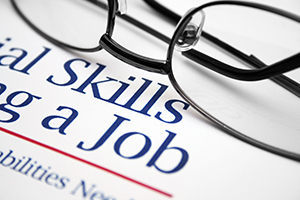By Julie Henderson
It’s all over the news. States are opening back up after the COVID-19 shutdown shuttered millions of businesses over the past months. Employers and employees alike feel everything from hope to trepidation at the thought of getting back to work.
What does that mean for your organization, and your workforce? While you are free to open (depending on your location and your type of business), there are many questions to answer about bringing your employees back.
Going back to work doesn’t mean business as usual. Many of us question if we will EVER see the workplace return to pre-pandemic functioning (shaking hands, sharing lunch space, sitting side by side in a closed meeting space, etc). Through these formidable obstacles, however, HR possesses a unique opportunity to reinvent their company’s workforce for the long-term good. You just need to be smart in the way you do it.
Here are four points to ponder in your quest to reinvent your workforce into a better, higher-functioning, more efficient animal.
Say Goodbye to Low Performers
There’s no better time than now to make sure your workforce consists primarily of A-players. Your organization’s survival may depend on it! Whether your company is bringing back 100% of employees-or only a fraction-in the beginning, weigh each one’s performance and “opt-out” of putting low-producing staff back on the payroll. Use this time to wipe your slate clean and move forward with a more effective, higher performing team, even if this means there are some new faces on it.
Decide on Flexible Working Options
As annoying as it is, the term “new normal” is spot on in explaining the challenges businesses face. HR may never see another time that they can more easily or thoroughly shake up their company’s inner workings. This may mean a greater number of staff permanently works from home, a larger chunk of sales comes from online offerings, more employees being cross trained to handle multiple jobs, a greater dependence on marketing than ever before, or something else. Regardless of how your company plans to progress, the game plan for what this means to employees should be clear and measurable as they start returning to work.
Build Relevant Perks Packages
As HR sheds low performers and looks for stronger candidates to take their places, they must consider what will make these top-tier catches want to work there. It may not be the same answer as it would have been pre-pandemic.
For example, childcare is a huge deal since many daycares and summer camps are still not opened yet. Adding assistance for employees to hire a family member or close friend to babysit, or offer on-site care, could be the difference in landing an A-player or not. Office safety will undoubtedly play a large role in an applicant’s decision. Where cubicles were never looked upon as a health hazard before, they may be now. Being able to offer spread out, well-ventilated workspaces could make or break your hiring efforts.
Getting creative in your company’s perks is a smart move in maintaining an engaged, happy workforce.
Create A Re-Screening Program
Whether you’re hiring new people or bringing former employees back, don’t assume all is well with them. They could have engaged in dangerous or illegal behavior while they were off work that employers need to know about. That’s why HR should consider re-screening employees before they’re re-hired. An important thing to check is drug use. Perform a drug screening that’s in compliance with your company’s drug policy and follow the set procedures. If they operate a motor vehicle for work, also order a motor vehicle records search to uncover any violations or license expirations that occurred while they were gone. A third item to look at is their recent criminal history. Pull a criminal records search in the county where they live to see if there are recent convictions present.
(Note: Review their original signed authorizations and if the language wasn’t evergreen, request that they sign a fresh one before you screen them).
Hopefully all of your team members behaved themselves while they were furloughed, but re-screening them gives you additional insurance that protects your workplace and mitigates your risk.
As companies begin bringing employees back on board it may feel like we are making up the rules as we go. This might be true to an extent, but it doesn’t have to be all bad. There are opportunities for HR to re-shape policies and teams and emerge even better than it is was pre-pandemic. With proper planning and strategic thinking, HR can make the post-pandemic workforce even better and higher functioning than the one before it.

Julie Henderson
Vice President of Sales
Data Facts, Inc.
jhenderson@datafacts.com
